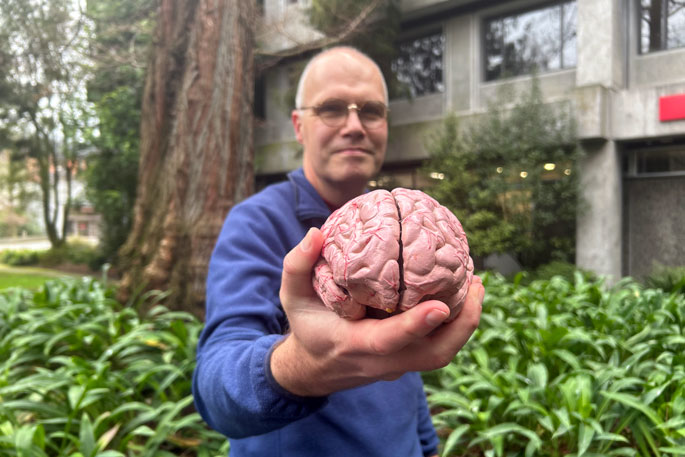A new, world-first study has used imaging technology to reveal the largest differences yet discovered in the structures of male and female brains.
The results are based on MRI brain scans from over 1000 adults aged between 22 and 35.
The scans revealed distinct differences in the cellular structure of grey matter regions deep within the brains of the male and female subjects.
Professor Watts says the contrasts were most obvious in areas that play a major role in mental health, such as the thalamus, hippocampus and amygdala.
These regions are involved in emotions, memory, learning and attention.
“Previous work has concentrated on sex-related differences in the volumes of brain regions, but by using more advanced imaging technology our team, which includes colleagues at the University of California San Diego, has discovered there are much bigger differences in the cellular structure of these regions, with only a small overlap found between the sexes,” Professor Watts says.
The findings challenge the accepted view that once individual variation in brain size is accounted for there are almost no differences between male and female brains, he says.
The study, which will be published in the prestigious Proceedings of the National Academy of Sciences journal, could shed light on sex differences in the susceptibility of males and females to a range of mental health problems, Professor Watts says.
“The brain regions and measures that showed the largest differences are also strongly associated with mental health disorders, and this finding may help explain why men and women are at different risk for specific disorders, such as anxiety and mood disorders, autism, and attention-deficit hyperactivity disorder.”
This would provide a biological explanation for previous research that has shown females are more likely to suffer from anxiety and mood disorders than males, and autism and antisocial behaviour are more common in males.
The data for the study, for which UC Faculty of Health Professor Lianne Woodward was a collaborator and co-author, was acquired as part of the United States National Institutes of Health-funded Human Connectome Project. Professor Watts says the study was limited because only self-reported “male” or “female” gender was recorded, without consideration of other gender identities.
“Future work will try to uncover to what extent the structural brain differences found relate to biological sex, or to gender. We would like to be able to separate the effects of biological factors, such as hormones and genetics, and the effects of environmental factors, such as how we are socialised to think and behave differently as a man or a woman in societies that have very different expectations of each gender.”
Professors Watts and Woodward are also heavily involved in the Adolescent Brain and Cognitive Development (ABCD) Study, which is following more than 10,000 American adolescents from age 9-10, with MRI scans every two years for at least 10 years.
“With the longitudinal nature of ABCD and such a large sample size, we will be able to determine how these sex differences emerge and develop during this critical period,” Professor Watts says.
“In addition to imaging, this study includes extensive information about each participant’s culture and home environment, physical and mental health, cognition, genetics, gender identity, and substance use history.
“This background information will enable us to extend our work in young adults to determine pre-existing risk factors for the development of mental health problems, allowing for earlier and more effective treatment.
“Understanding the neurobiological causes of mental health problems will also help experts design and evaluate treatment options and support ‘personalised medicine’, where treatment is tailored to each individual patient, leading to improved outcomes.”



0 comments
Leave a Comment
You must be logged in to make a comment.